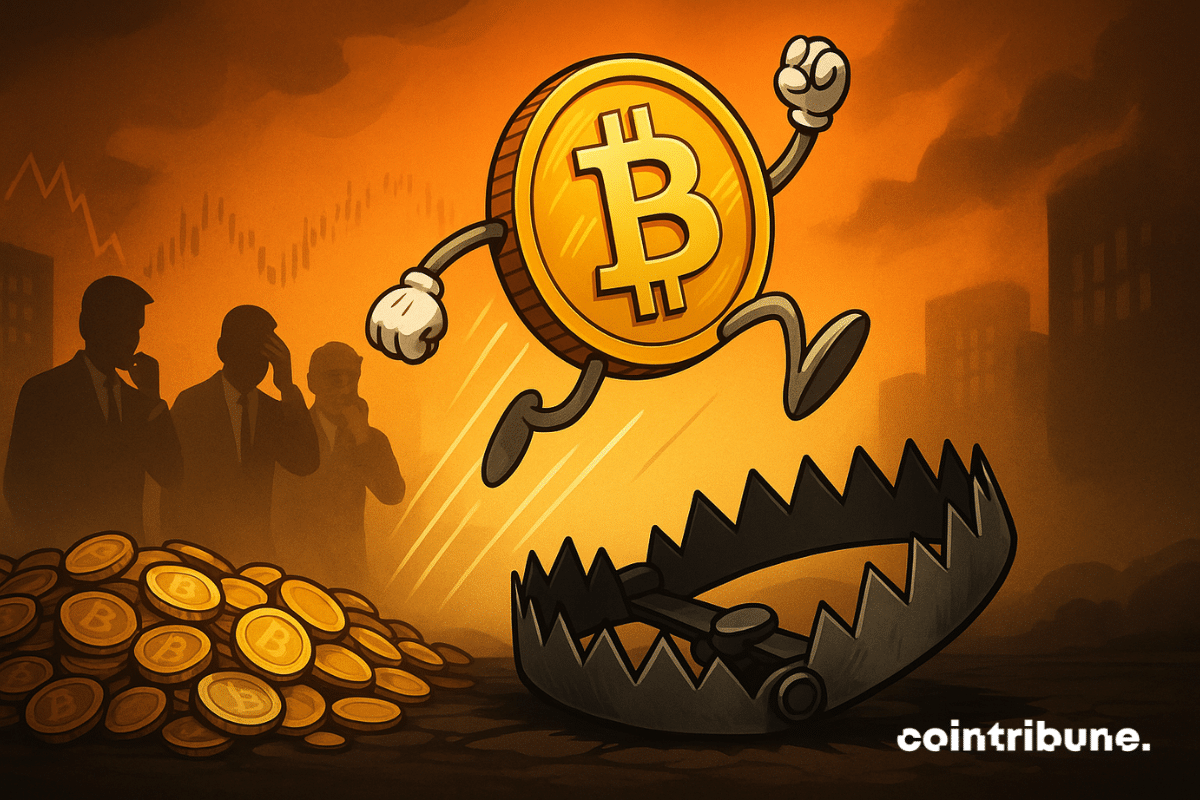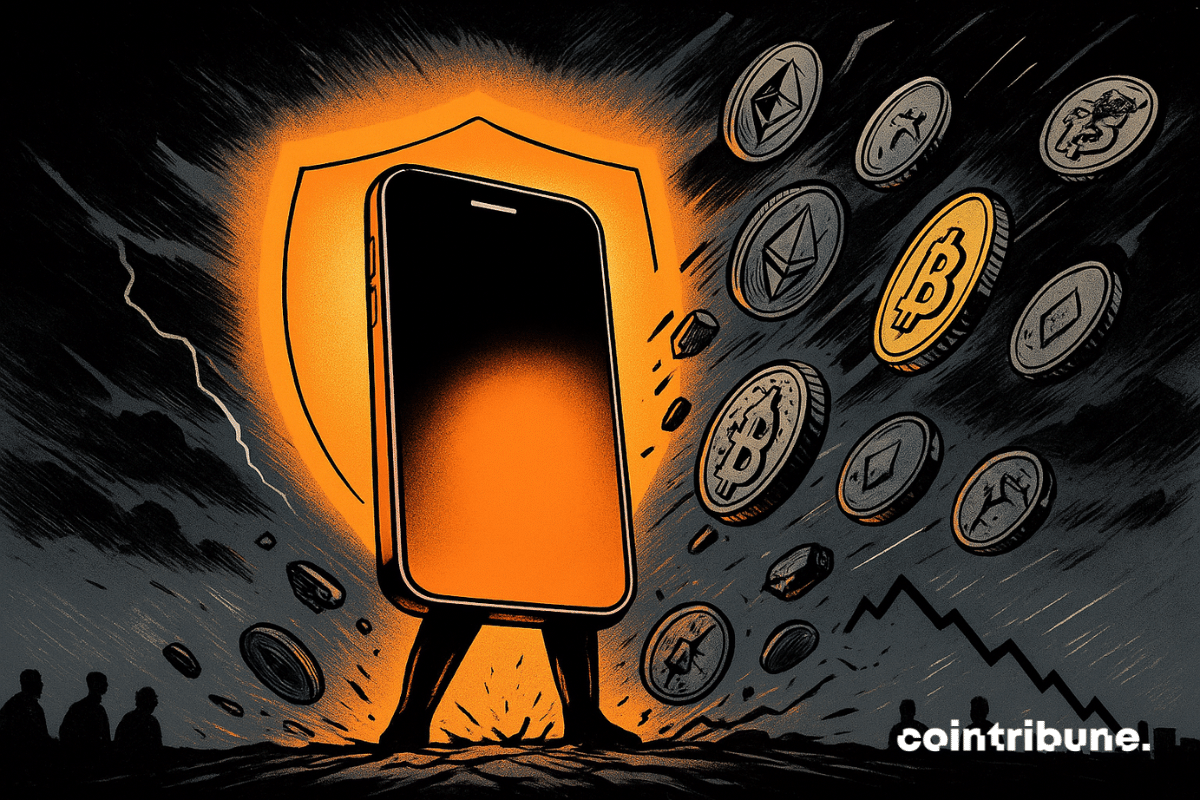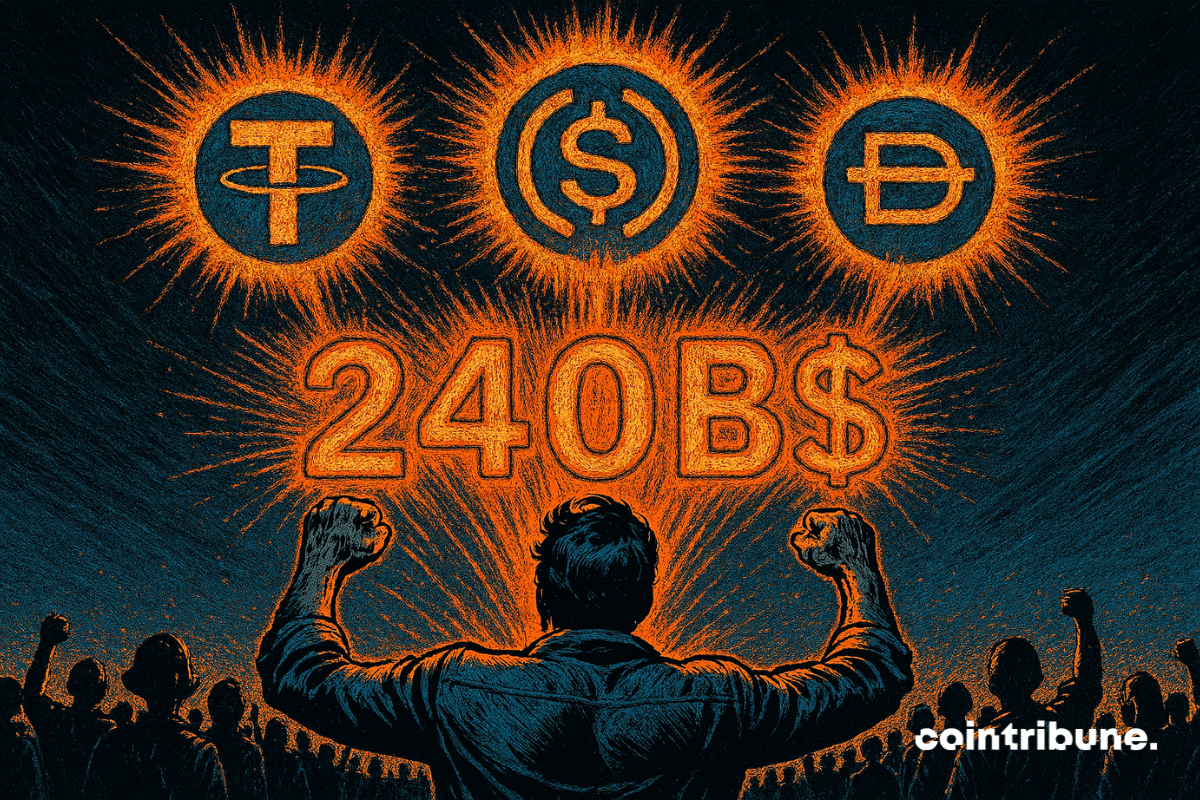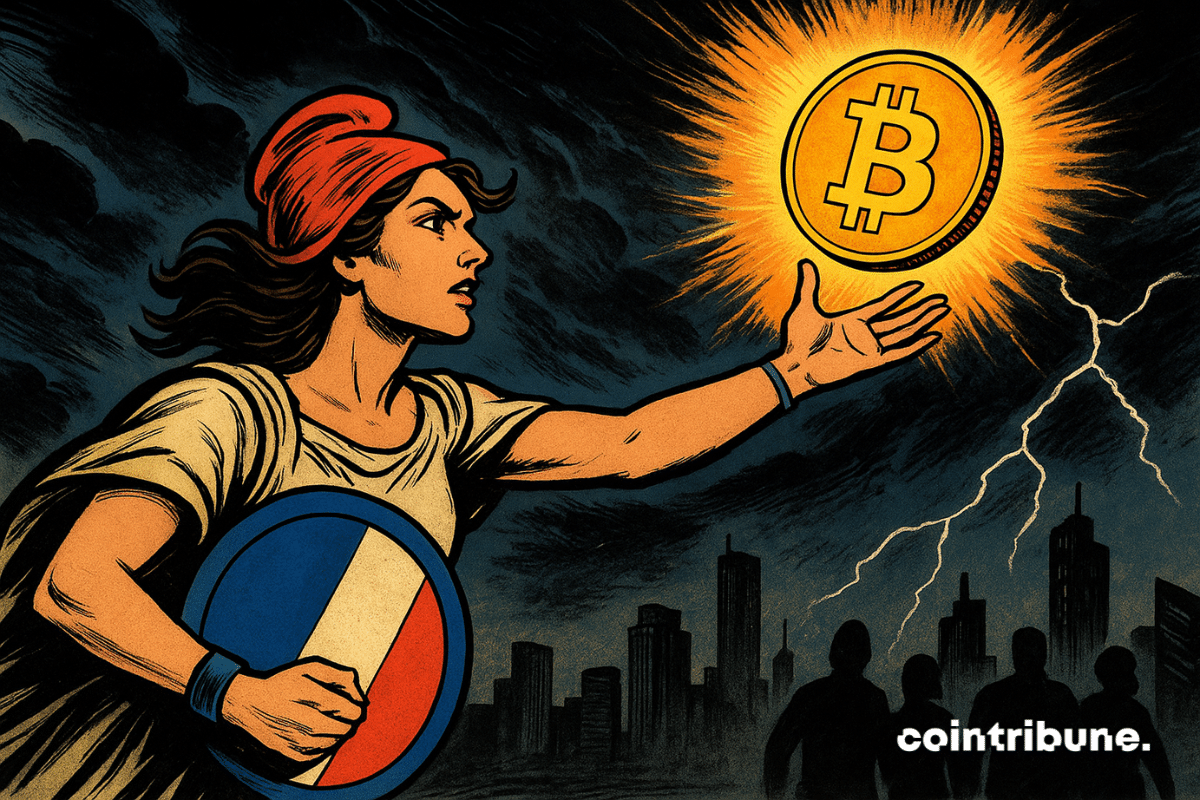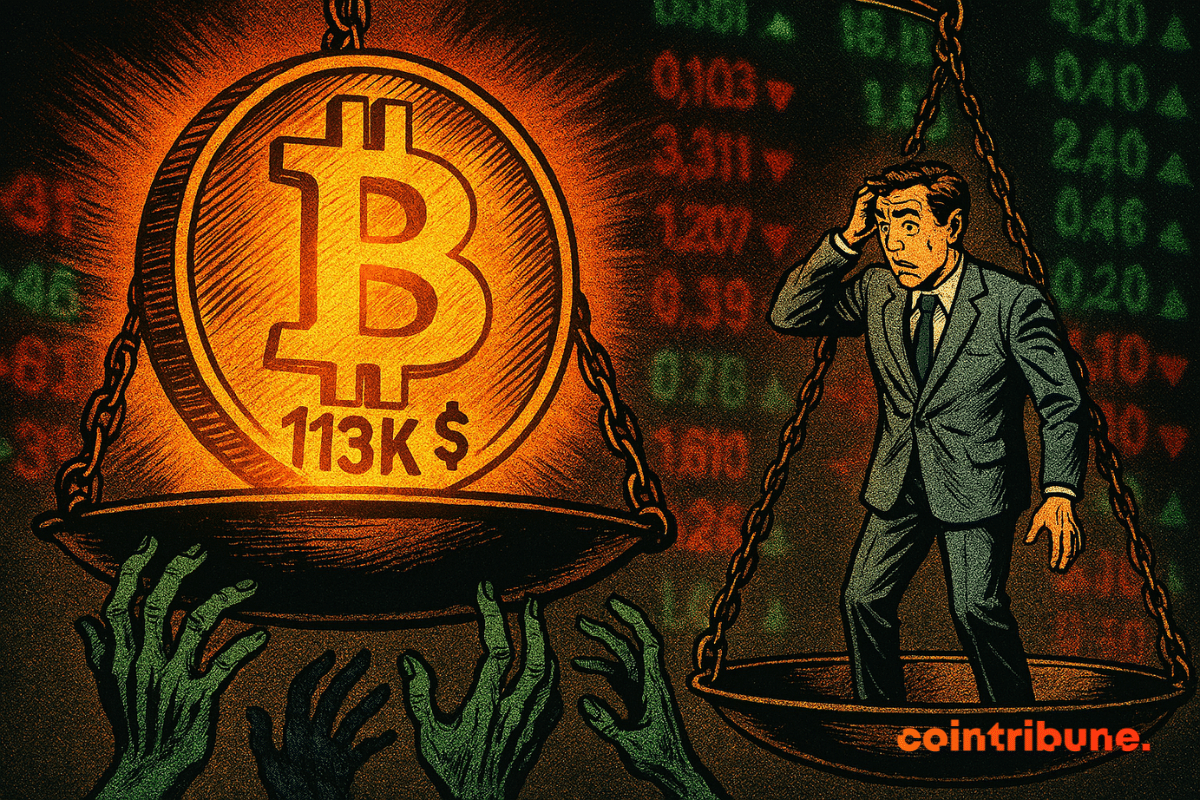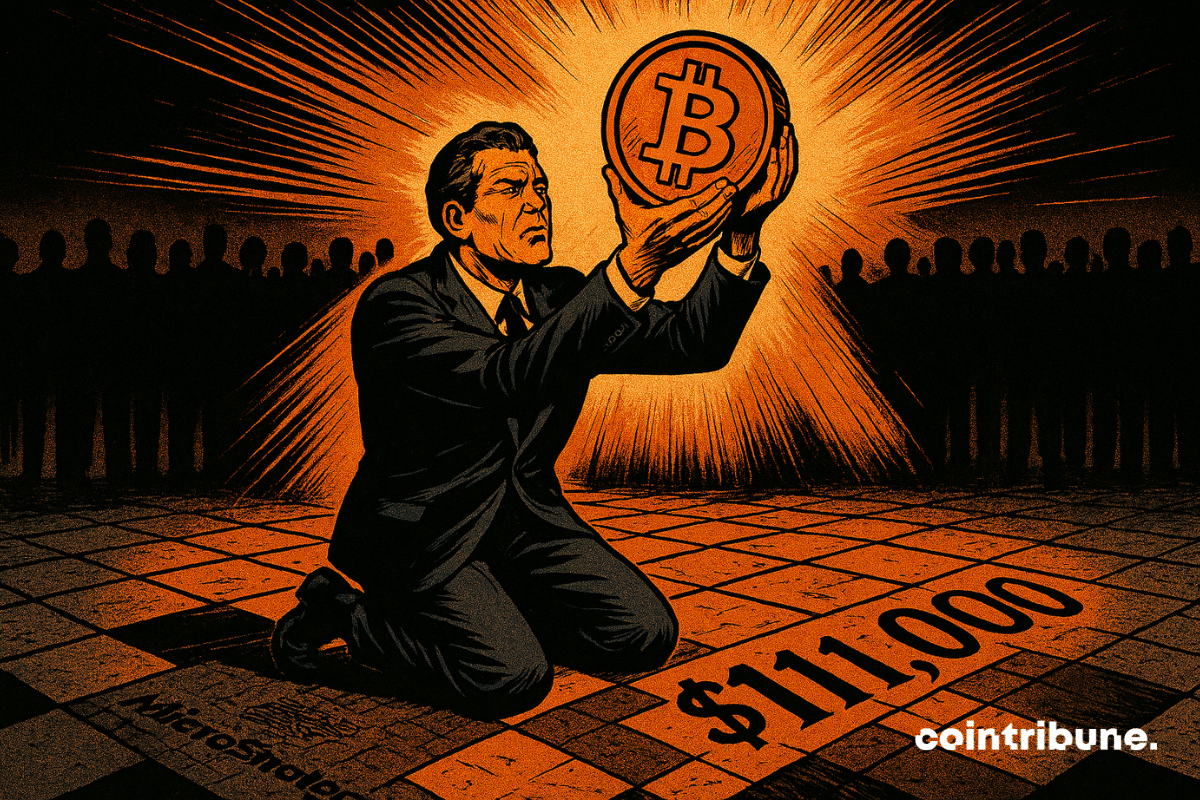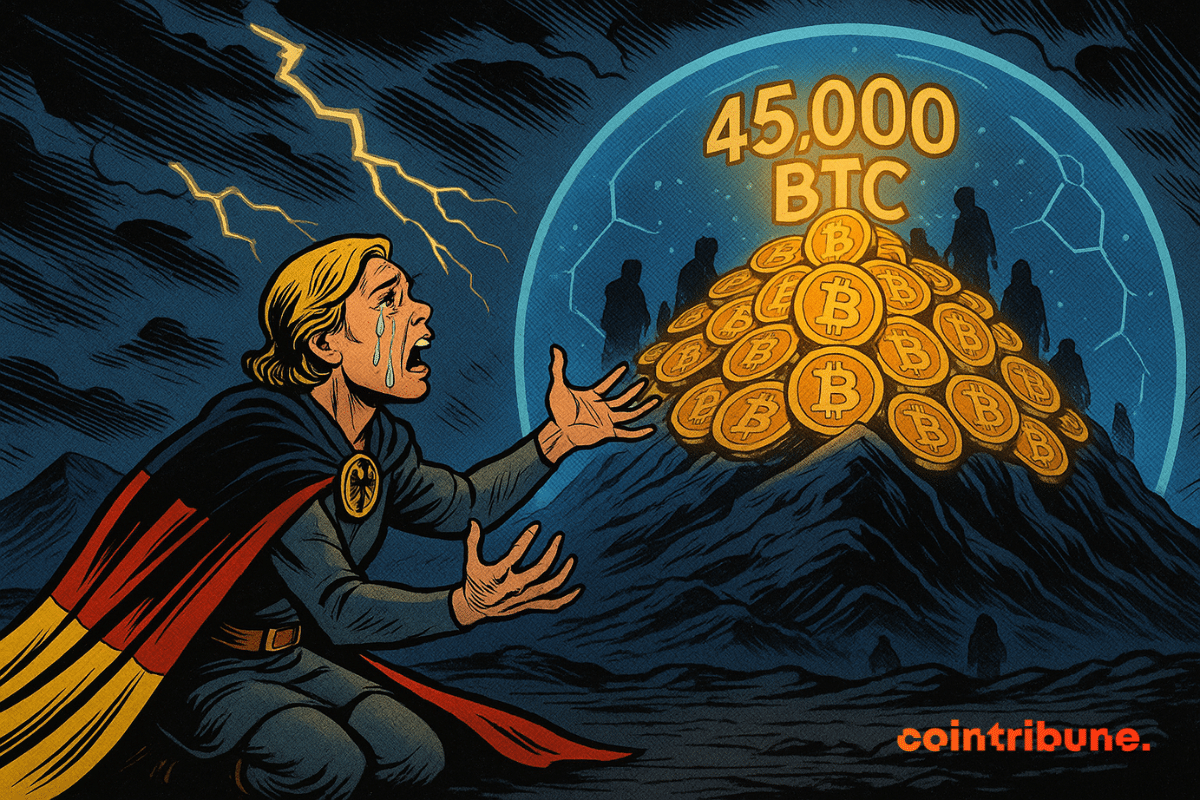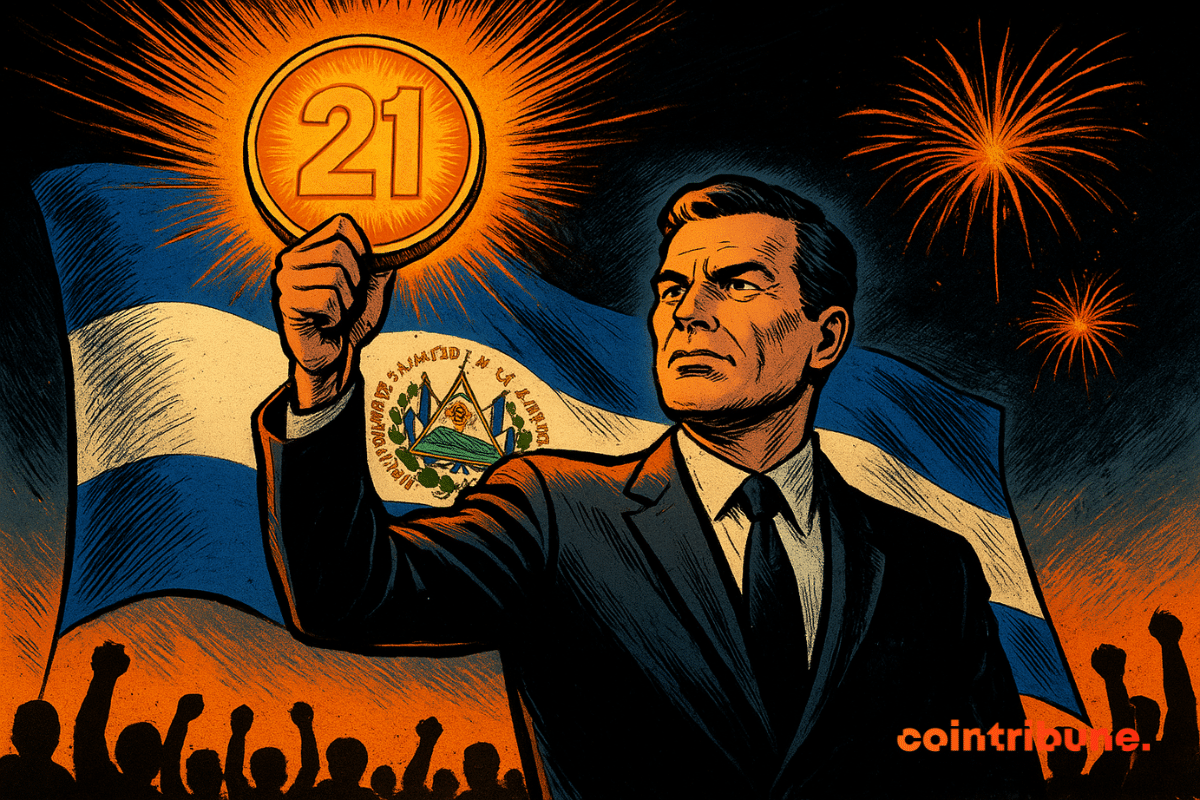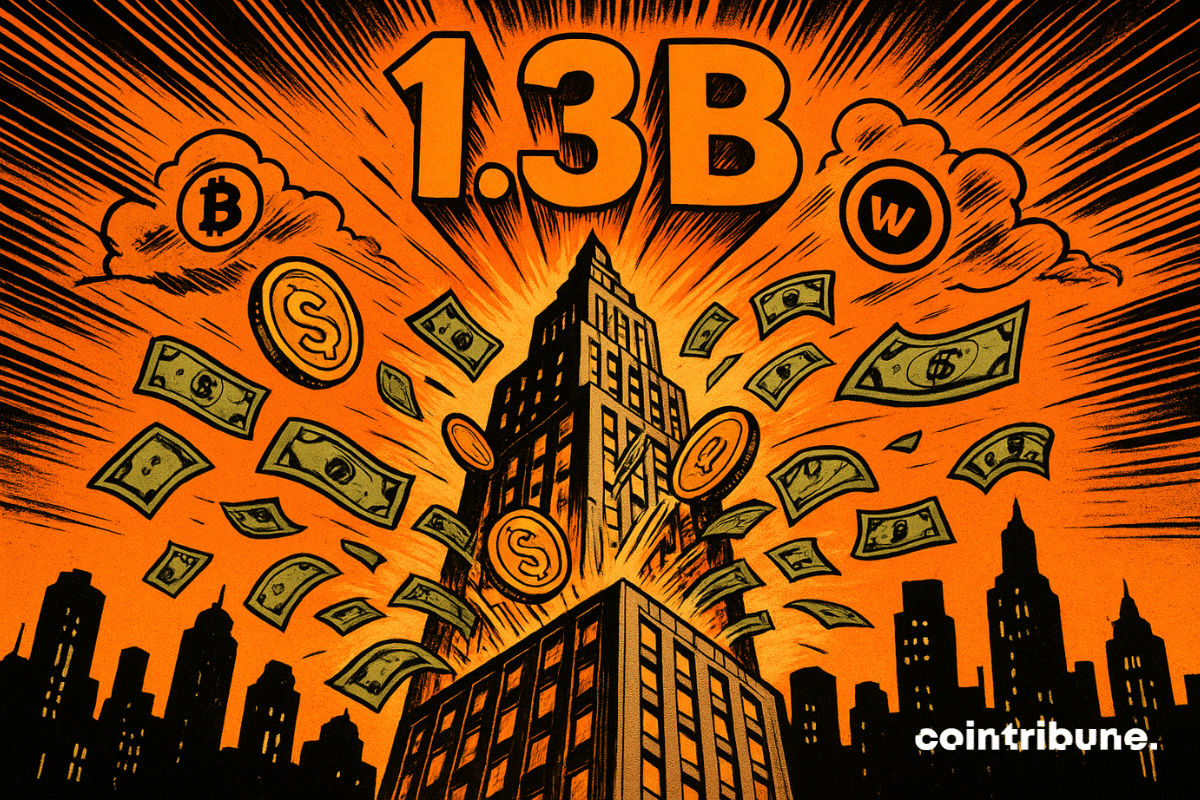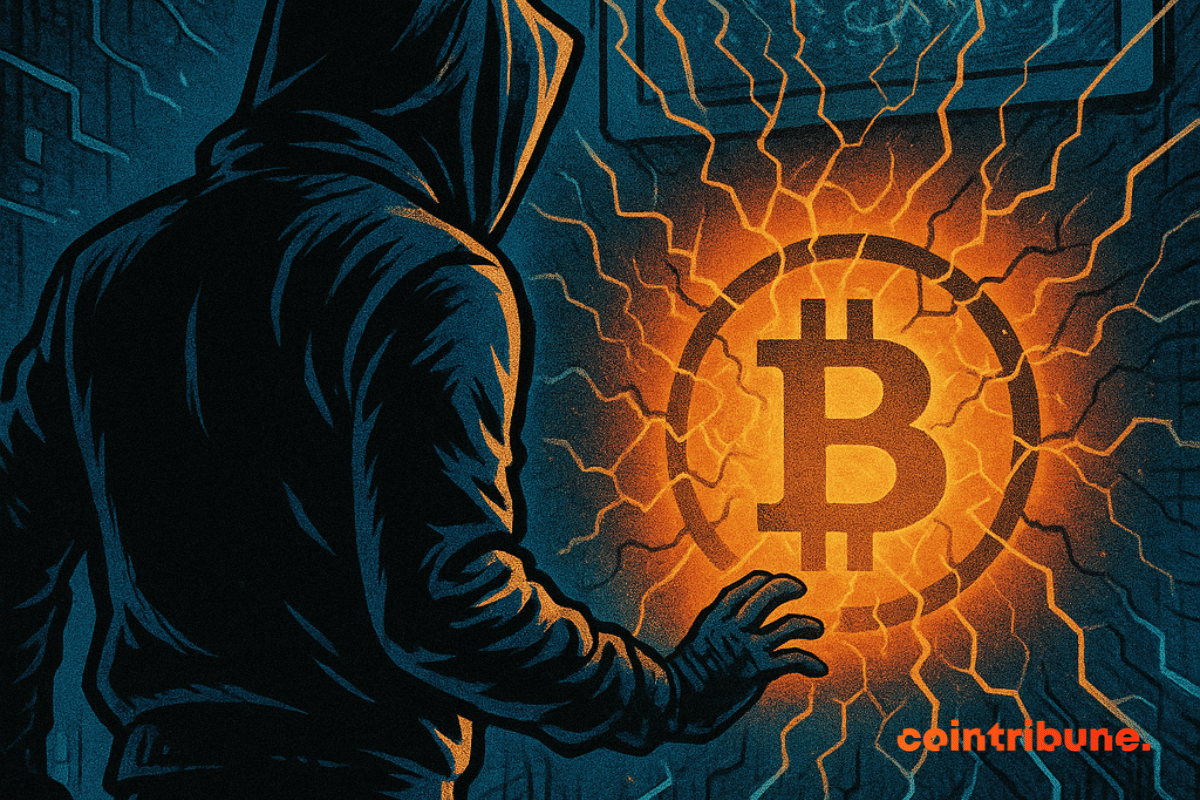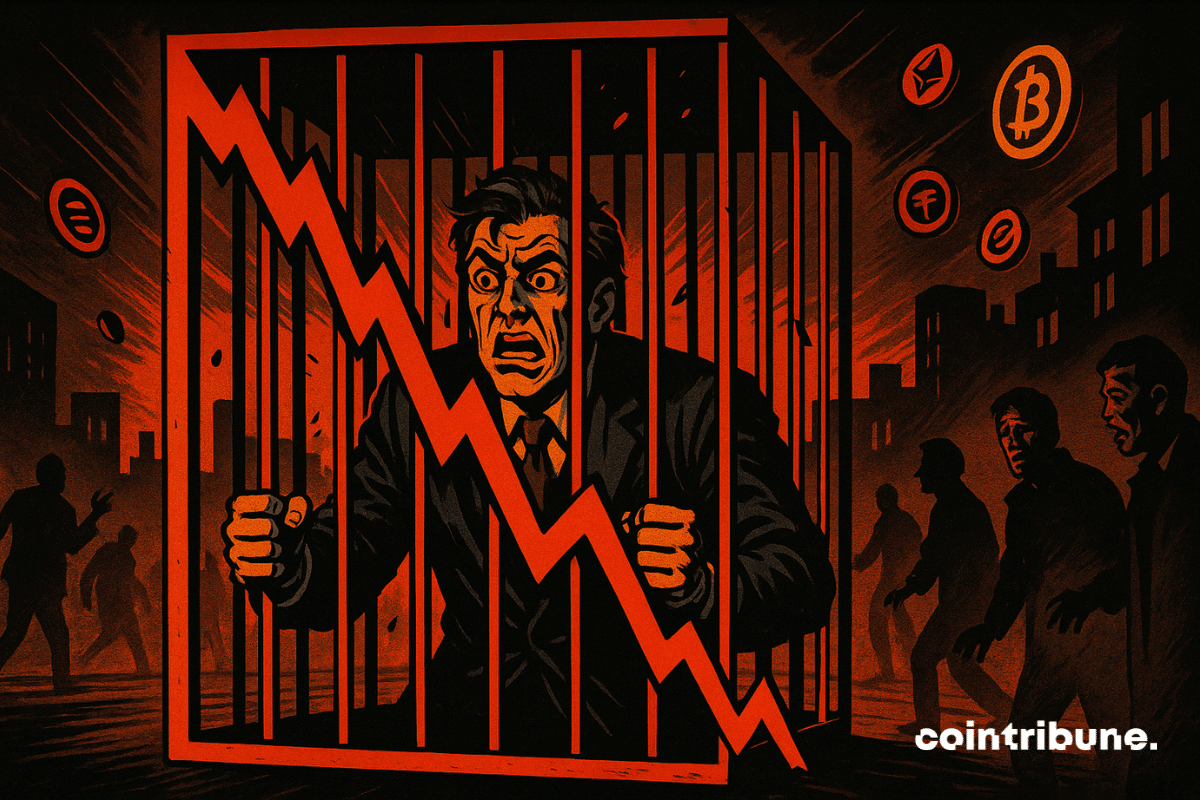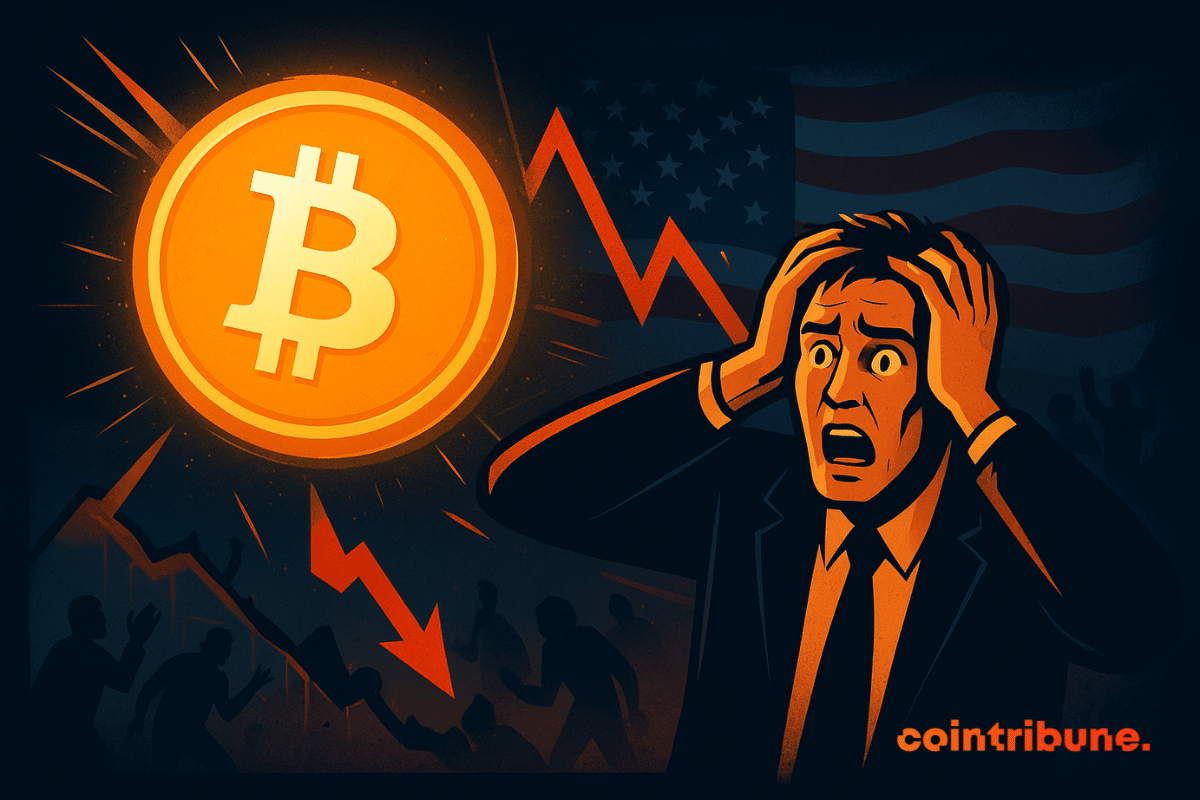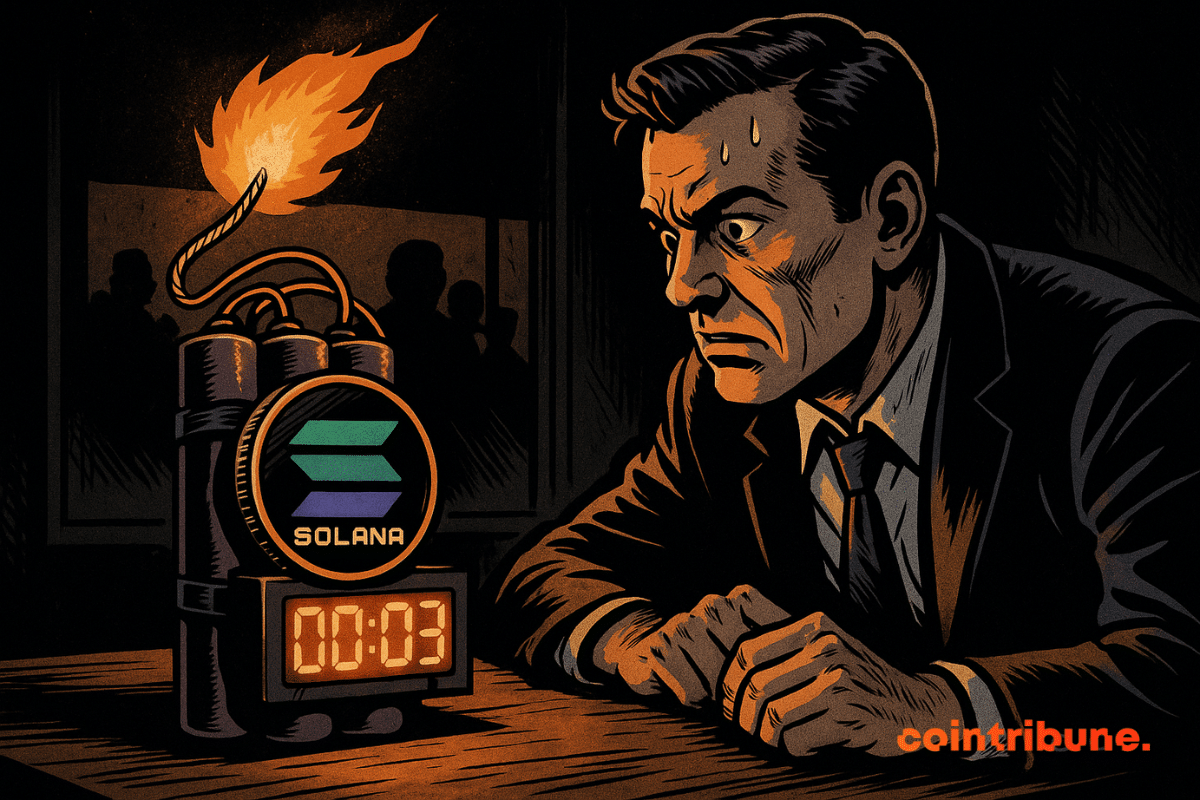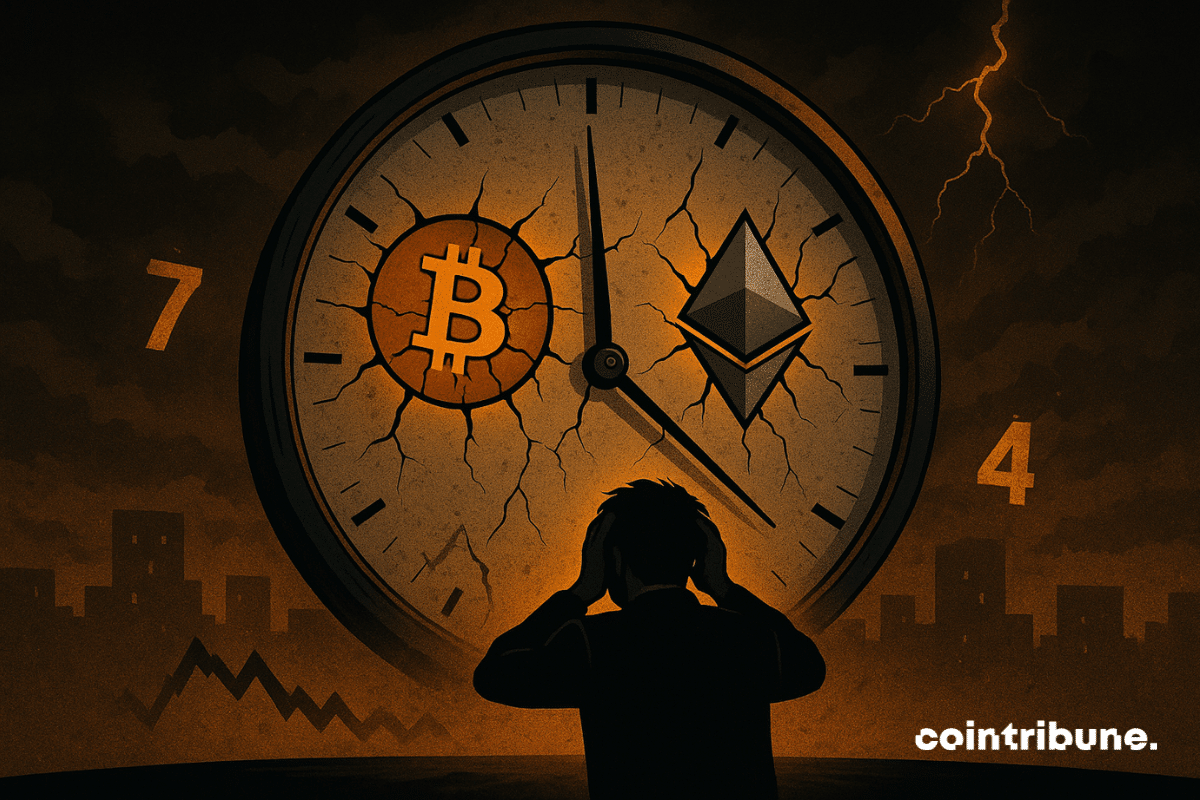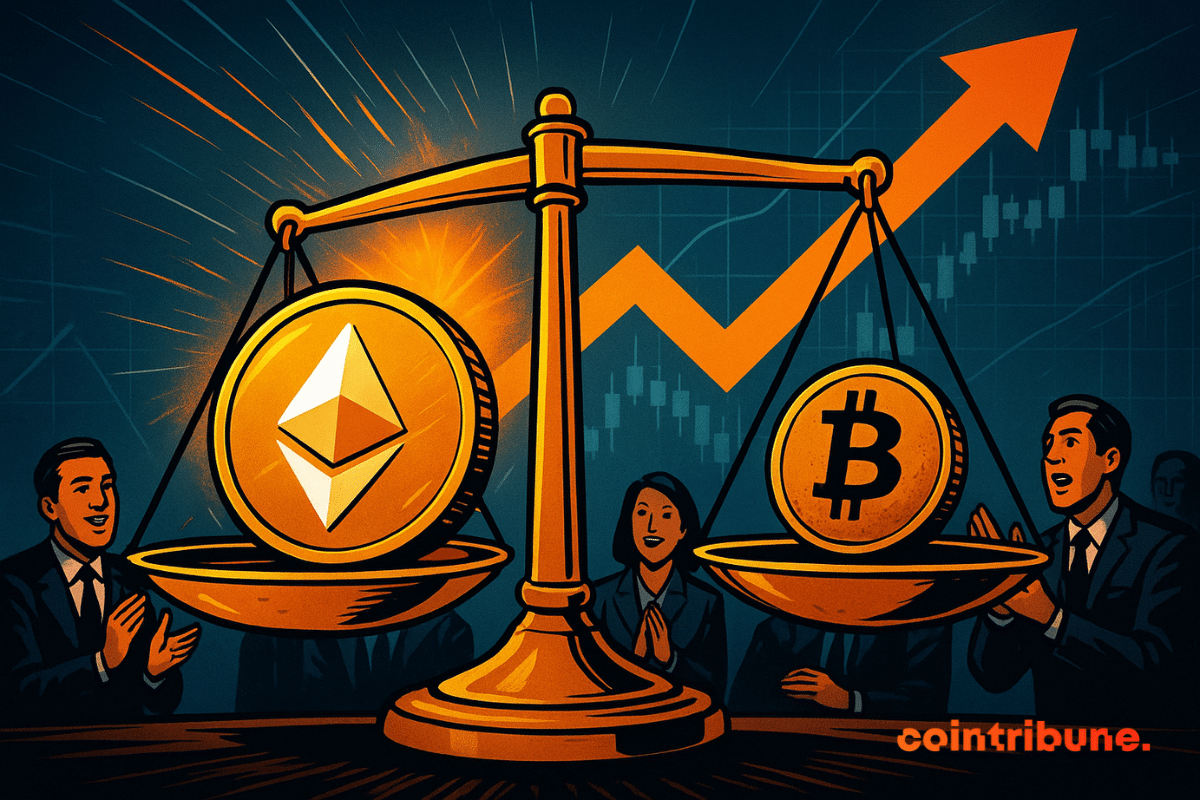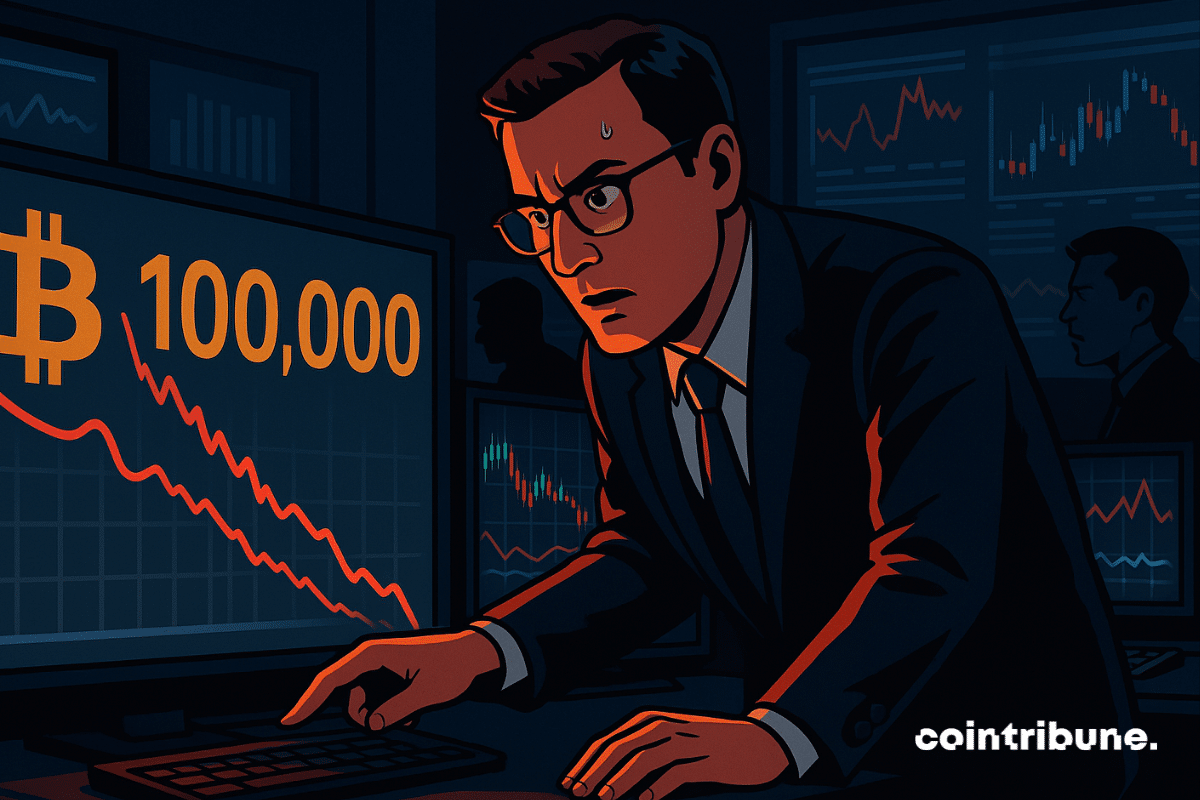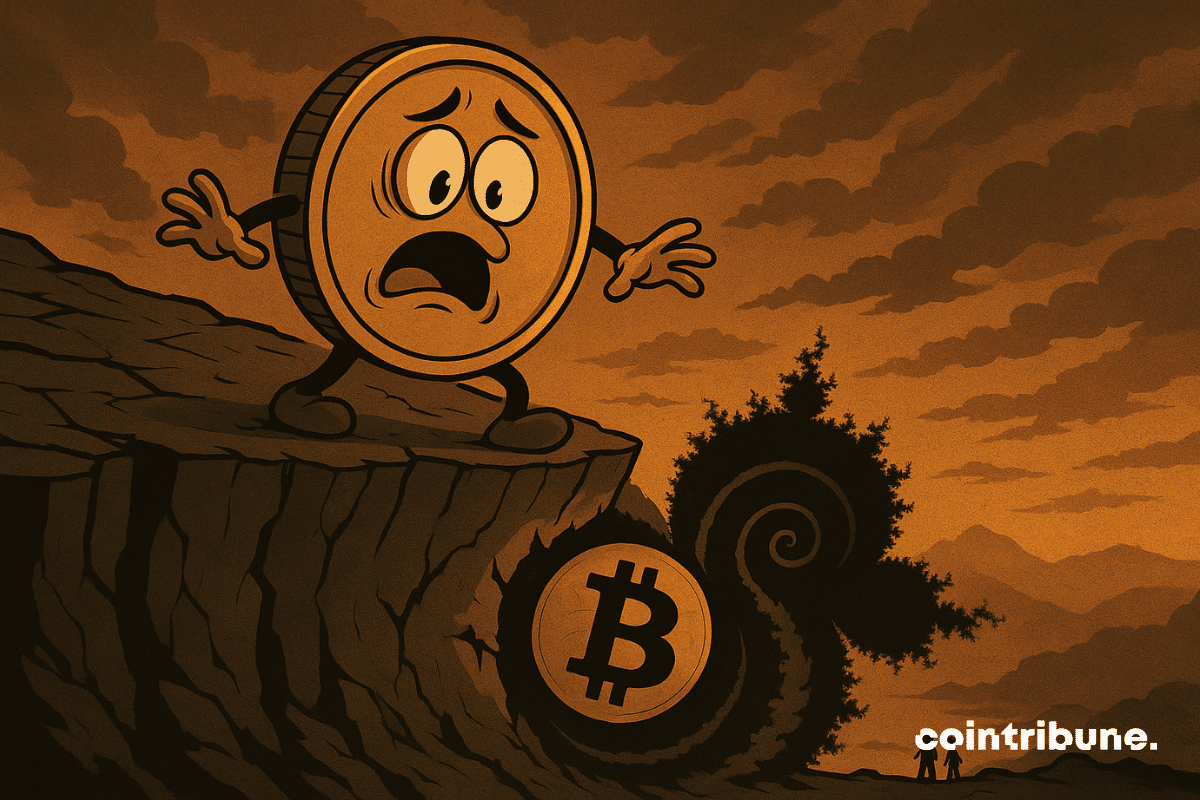The latest US inflation data propels bitcoin to new heights, but analysts remain divided on the short-term trajectory. The flagship crypto flirts with $115,000 as speculation about a Fed rate cut intensifies. Could a new correction precede the long-awaited surge?
Theme Bitcoin (BTC)
Apple’s iPhone 17, launched this month at a stable $799, is drawing attention for reasons beyond design and performance. For crypto holders, the device has suddenly become far cheaper in digital asset terms. Buyers now need only 0.0072 BTC or 0.1866 ETH to purchase it. That is almost half of what was required for the iPhone 16 a year ago.
S&P 500 rejected Strategy’s inclusion despite its Bitcoin holdings, with JPMorgan calling it a blow to crypto treasuries.
While the Fed blows hot and cold, the whales are dozing off… and here come the stablecoins, discreet stewards of the crypto market, imposing themselves as masters of the party.
The speculative momentum around bitcoin clashes with the reality of markets. Driven by the fervor of records and the unexpected support from Donald Trump, several publicly traded companies that based their financial strategy on accumulating BTC are undergoing a severe correction. Their shares sometimes fall below the value of their crypto holdings, exposing the limits of a model relying almost entirely on bitcoin's volatility.
This Wednesday, the publication of a falling PPI for August immediately revived speculation around a Fed rate cut. Bitcoin gained 0.5% within the hour, driven by this signal perceived as favorable to monetary easing. Approaching the FOMC, investors now scrutinize every economic indicator, aware that the slightest variation can trigger a market repositioning.
More and more businesses are accumulating bitcoins, but also more and more countries. The latest is Kyrgyzstan, a small Central Asian country.
BitMEX research shows BRC-20 tokens dominate Bitcoin activity, while ordinal images shape storage and node performance differently
GameStop's crypto strategy is starting to pay off. The iconic video game retailer, once chronically struggling, has managed to limit its losses in the second quarter of 2024 thanks to a bold decision: to record bitcoin on its balance sheet. A bet that illustrates how the boundary between traditional finance and digital assets is increasingly fading.
A tidal wave of bitcoin is pouring into company treasuries and things finally seem to be clearing up in France.
Bitcoin flirted with $113,000, traders were enthusiastic, the Fed was complacent, and Saylor was euphoric. But without spot buying, beware of a backlash: the intoxication could quickly turn to vertigo.
Bitcoin clings to its $110,000 like an old sailor to his raft. While giants buy, whales sell, and traders sweat.
While bitcoin wavers, Michael Saylor forces a smile: he spends 217 million, stacks 638,460 BTC, and transforms Strategy into a financial factory dedicated to cryptos.
Germany allegedly let 5 billion in bitcoin slip away in the Movie2K case. Discover all the details in this article.
El Salvador marked the fourth anniversary of its Bitcoin Law with a symbolic purchase of 21 BTC, just as analysts warned that September 8 often proves unfavorable for the cryptocurrency.
The Trump family is back in the spotlight after their wealth coffers grew following American Bitcoin's (ABTC) debut and World Liberty Financial's (WLFI) price surge. However, both DeFi projects linked to the family have since faced a market correction of over double digits.
Bitcoin attracts bettors, Ethereum seduces bankers, Dogecoin dreams of an ETF and Tether dresses in gold: the crypto circus continues its show, between promises, glitters and persistent doubts.
Bitcoin, does it take away or does it enrich? For Michael Saylor, it inflates the wallet: $7.37 billion gained despite a market drop. Proof that faith pays off.
Since 2011, Satoshi Nakamoto has disappeared, leaving behind an unresolved enigma. However, some believe that the threat of quantum computing could force his return. This is the somewhat crazy but fascinating thesis of Joseph Chalom, co-CEO of SharpLink Gaming
The calm was short-lived. Indeed, the crypto market is plunging back into fear, according to the Crypto Fear & Greed Index, which dropped to 44 after several weeks of stability. This psychological signal is not isolated, as it accompanies a clear shift in investment flows, leaving the most volatile altcoins to refocus on the heavyweights of the sector, bitcoin and Ethereum.
The disappearance of a few thousand bitcoins from a balance sheet is enough to fuel controversies. This weekend, the issuer of USDT found itself at the center of a media whirlwind: did it secretly sell its BTC? Some saw a strategic shift there. However, behind the seemingly worrying figures, another reality emerges, much more nuanced, and above all, revealing the discreet movements of a giant in crypto finance.
Bitcoin mining difficulty touched a new all-time high as the crypto market descended into volatility following the latest US job data. After hitting an all-time high (ATH) in August, market commentators projected that the difficulty of Bitcoin mining would decrease. However, the mining difficulty has steadily increased as the month progressed, with large players dominating the space.
Quantum computer and Bitcoin. Here is a hot series that is not about to fade, especially after IBM's latest experiment.
Reports from the U.S. labor market sent shockwaves through the financial markets, prompting risk assets like Bitcoin to experience sharp price swings. With job data for August coming in lower than expected, predictable alarms erupted regarding a looming recession, which could drive fresh appetite towards risk assets.
Solana speeds like lightning but stalls below 215 dollars: ETF lurking, record upgrade and flashy meme-coins. Crypto hesitates between a surge and a scheduled slip.
This Friday, September 5, nearly $4.7 billion worth of options on Bitcoin and Ethereum expire, while technical indicators waver and the U.S. economy sends signals of slowdown. This crucial deadline could reshape the spot markets' dynamics.
After trailing Bitcoin for most part of a decade, Ethereum has toppled the OG crypto in monthly and weekly spot trading volume on centralized exchanges. Market data ties this trend flip to recent trends, including increased institutional adoption of Ether, as well as capital rotation from BTC to ETH.
Analysts say Bitcoin could fall below $100K before recovering, with key levels and market trends guiding the outlook.
Is bitcoin approaching a decisive turning point? As signs of fatigue accumulate, a new analysis rekindles the specter of an imminent bearish cycle. According to a fractal modeling aligned with historical four-year cycles, October could mark the beginning of a deep correction. After the euphoria of the highs, the market enters a phase of uncertainty where every technical signal is scrutinized. This scenario, increasingly discussed among analysts, calls into question the strength of the current upward trend.
The United States has leaped to the second spot on the Chainalysis 2025 Global Adoption Index due to regulatory clarity and increased ETF adoption. India retained its leading position as the third consecutive global leader, and Pakistan, Vietnam, and Brazil were the top five. This ranking reflects a broader trend, crypto adoption is expanding rapidly in both mature markets with clearer rules and emerging economies where digital assets address real financial needs.
